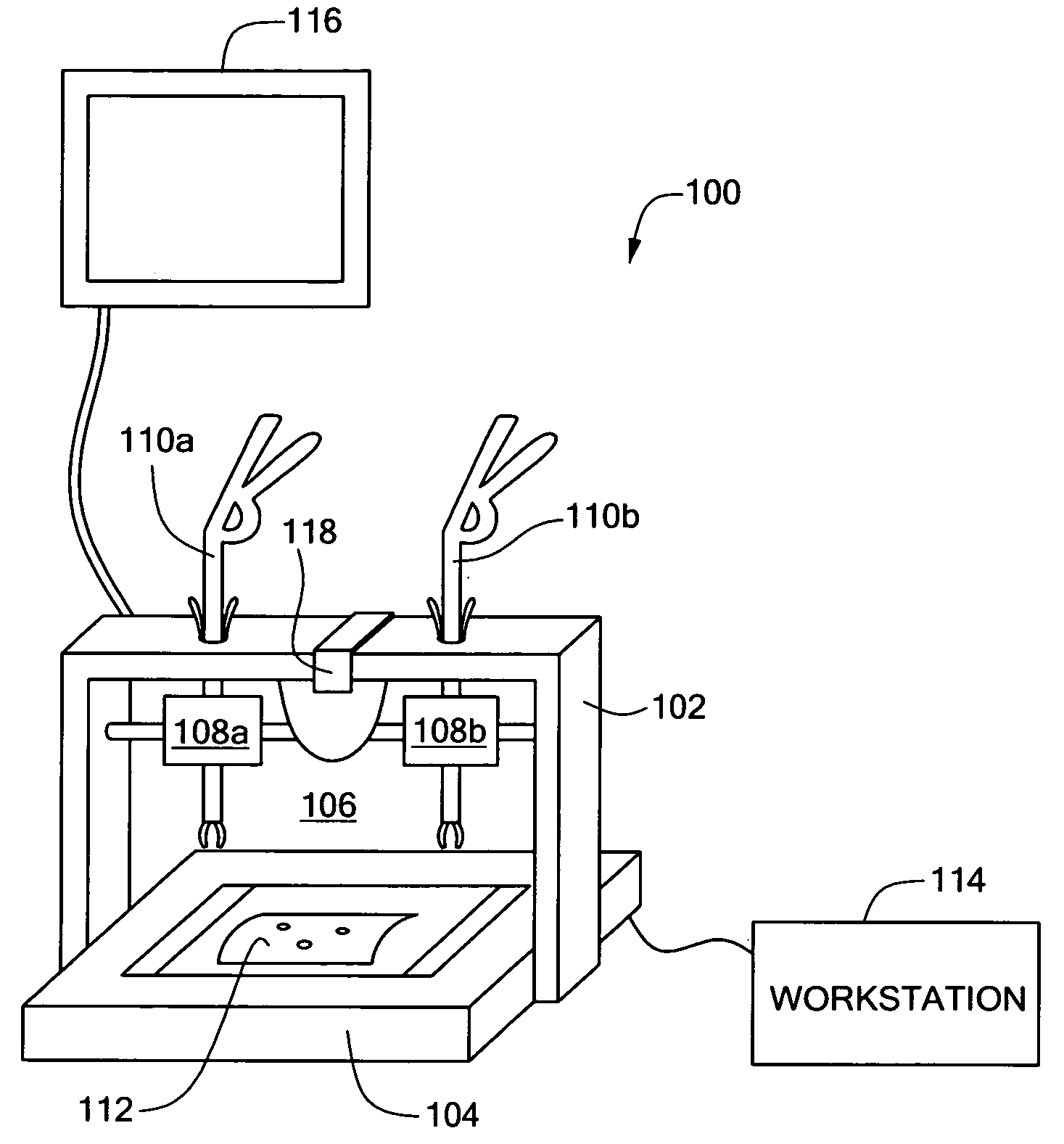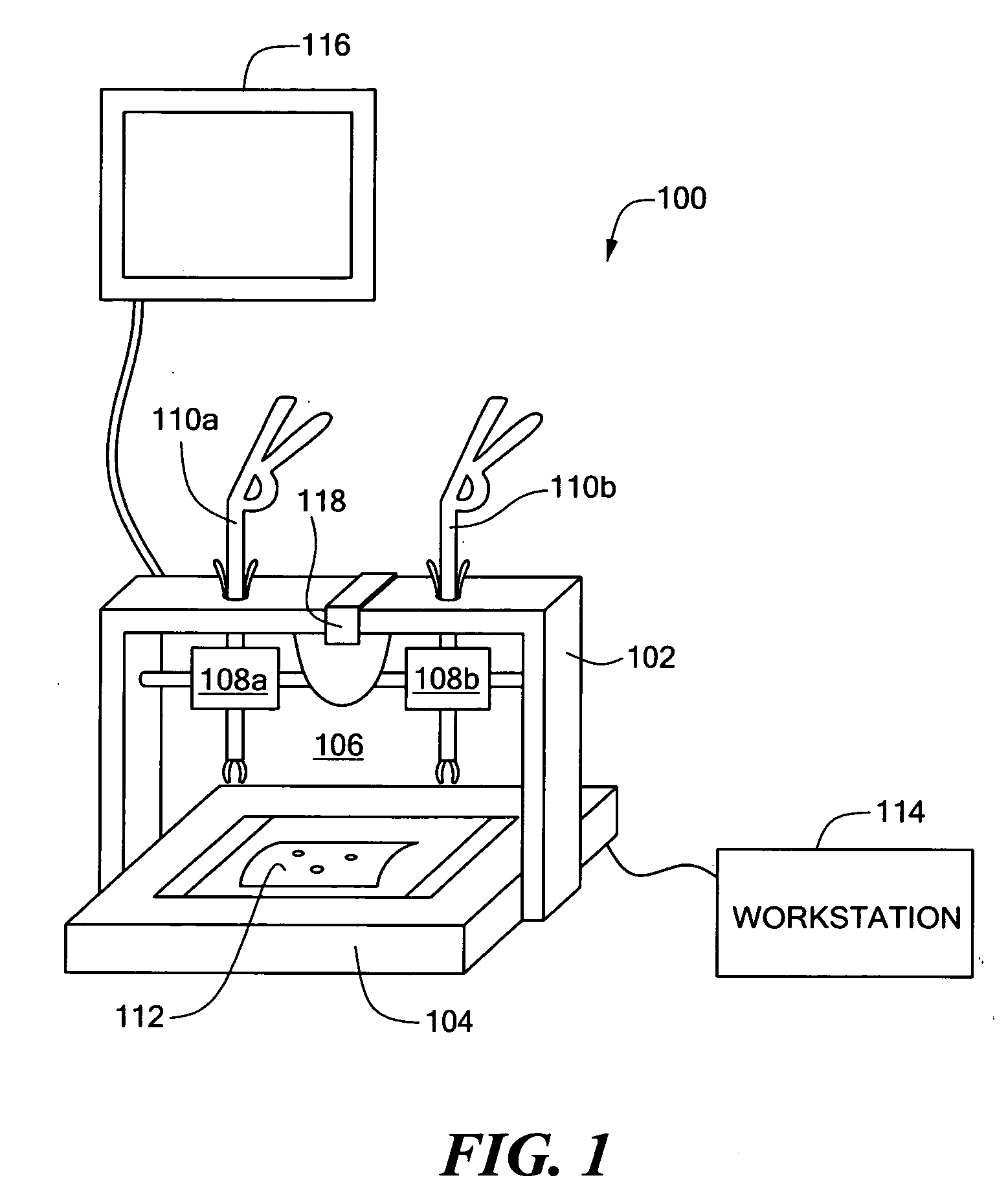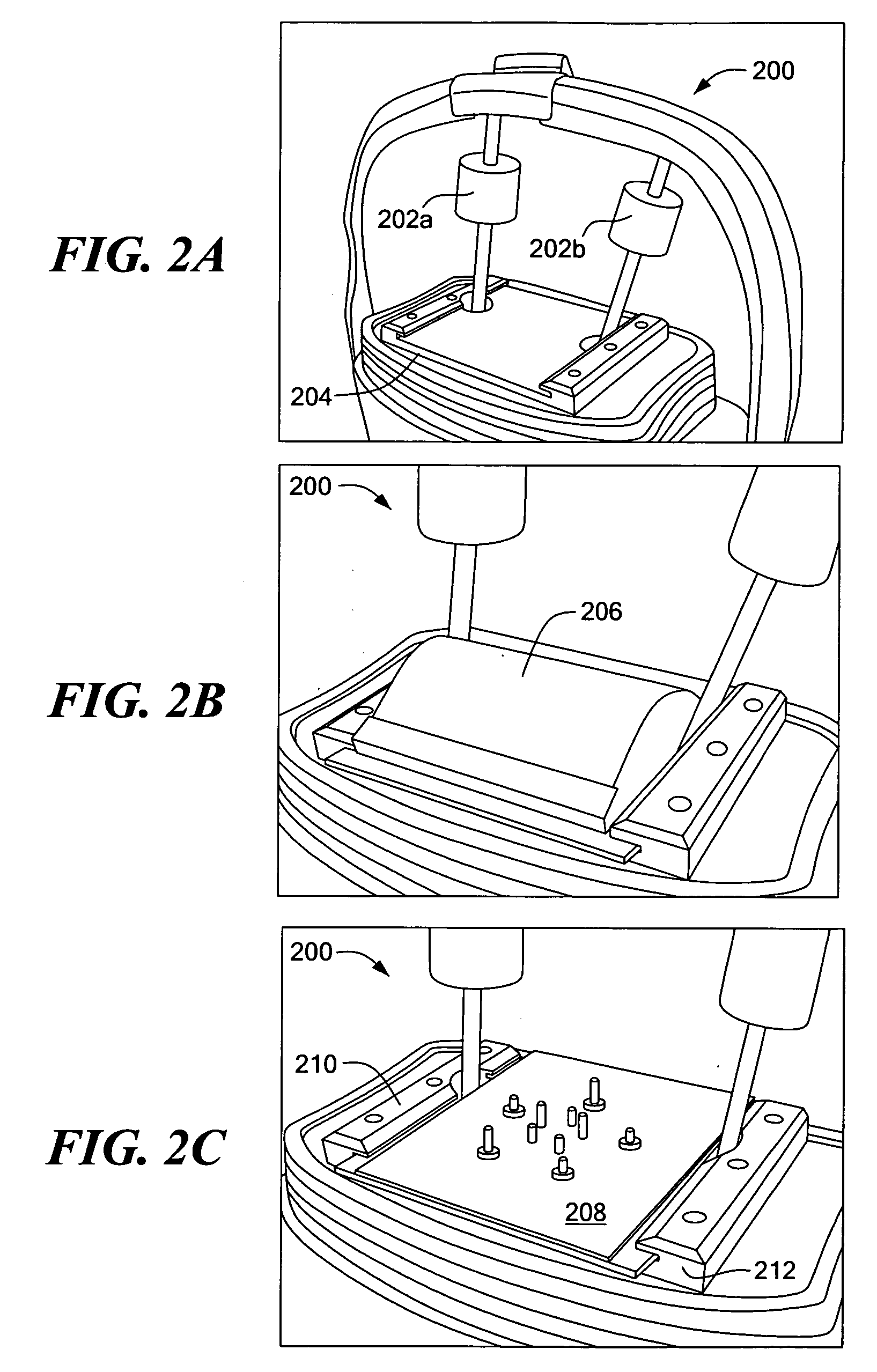Surgical training system for laparoscopic procedures
a training system and laparoscopic technology, applied in the field of surgery, can solve the problems of not being able to provide virtual reality systems with “real-world” authenticity, lack of realism, lack of appropriate performance assessment methodologies, etc., and achieve the effect of improving the quality of surgical training and performance evaluation, and objectively assessing trainee performan
- Summary
- Abstract
- Description
- Claims
- Application Information
AI Technical Summary
Benefits of technology
Problems solved by technology
Method used
Image
Examples
Embodiment Construction
[0033] The invention provides a surgical training system that tracks movement of a surgical instrument to evaluate task performance on one or more objective criteria. Before discussing the details of the invention some higher-level concepts are discussed. By observing how expert surgeons evaluate the performance of a surgeon in training, certain components of a surgical task can be identified that account for competence in relation to instrument motion. Exemplary movement criteria include compact spatial distribution of the tip of the instrument, smooth motion, depth perception, response orientation, and ambidexterity. The time to perform the task, as well as outcome of the task, are two other parameters that can also be included.
[0034] These parameters can be transformed into quantitative metrics using kinematics analysis theory. In general, the inventive surgical training system includes a laparoscopic tracking device to measure the time-dependent variables required for analysis,...
PUM
 Login to View More
Login to View More Abstract
Description
Claims
Application Information
 Login to View More
Login to View More - R&D
- Intellectual Property
- Life Sciences
- Materials
- Tech Scout
- Unparalleled Data Quality
- Higher Quality Content
- 60% Fewer Hallucinations
Browse by: Latest US Patents, China's latest patents, Technical Efficacy Thesaurus, Application Domain, Technology Topic, Popular Technical Reports.
© 2025 PatSnap. All rights reserved.Legal|Privacy policy|Modern Slavery Act Transparency Statement|Sitemap|About US| Contact US: help@patsnap.com



